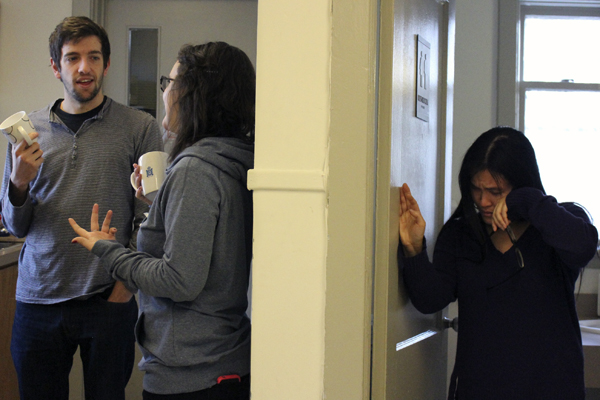A new approach to motivation
Vanessa Millar | Fulcrum Contributor
ON MORNINGS LIKE today, it takes all the energy I can muster to get out of bed and start the day. I would happily skip my morning yoga class in exchange for 45 more minutes in my comfy bed. I, like many university students, often find it difficult to motivate myself to get active.
According to Jennifer Brunet, an assistant professor in the School of Human Kinetics at the University of Ottawa, there are two types of motivation: extrinsic and intrinsic. Extrinsic motives for working out include weight control, physical appearance, and social recognition, while intrinsic values include self-efficacy and enjoyment.
What would happen if an added extrinsic motive came into play to get people to maintain a healthy lifestyle? Financial incentives can be an extremely effective way to motivate individuals to exercise and lose weight. According to a 2008 study published in the Journal of the American Medical Association, participants who were given a financial incentive lost more weight than participants in the control group.
Shows like The Biggest Loser, in which the person who loses the most weight receives $250,000, are a real-life example of how money can motivate. However, the idea of financial incentive has also become popular outside the realm of reality TV. Websites like Stickk.com allow users to set a personal goal such as losing weight or exercising a certain amount per day. If you’re not successful, your money will be sent to a charity, an anti-charity (one you don’t like), or a friend/family member. Healthywage.com is an American site that charges a fee to participate, but the payoff can be large if you’re successful in your weight-loss goal. For instance, it costs $100 to enter the 10 per cent challenge, but if you shed 10 per cent of your body weight in six months, you double your money.
Meghan McGrail, a communications student at the U of O, says a financial incentive would definitely motivate her to work out.
“As someone who struggles to stay motivated to stick to a workout plan and as a student on a budget, I think a financial incentive would help keep me on track,” she said. “If [the site] is something I have to check in with on a regular basis, then it would help me develop a routine at least.”
What happens when the financial incentive runs out? It’s anticipated that people will continue their exercise programs because they have built the habit.
Fourth-year public relations and communications student Rebecca Breslin says she believes in the notion of the 30-day challenge, which says it takes 30 days of repeating an activity before it becomes a habit in your everyday life.
“Once you add a workout to your daily routine, it becomes less of a chore and more of a reward,” she said.
However, if the individual has not developed intrinsic motivation and the workout still feels like a chore, they might be unlikely to continue without an extrinsic motive such as money.
Professor Brunet says she thinks extrinsic motivation can be contagious and can lead to intrinsic motivation—enjoying exercise and healthy living for its own sake. She believes surrounding yourself with motivated people is an excellent step to take, since it’s likely that you’ll get motivated too.
“Simply being motivated and leading an active lifestyle may incite others around us to engage in exercise, because our own values, attitudes, and behaviours are transmitted to others through direct communication, social support, and role modeling,” she explained.
Financial incentive may not be a long-term motivator, but it may help you get that much-needed kick-start to your exercise routine. To continue with a healthy lifestyle, you’ll need to start appreciating healthy eating and exercise for their own worth. The best way to do that? Grab a friend, and work on your goals together. Misery might love company, but so does fun!




